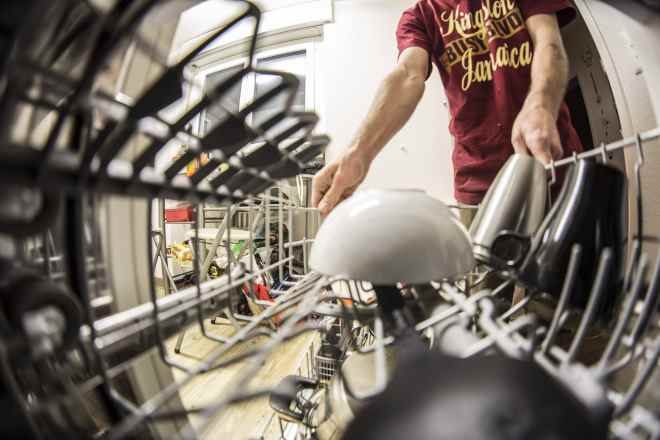Repair or Replace? Know What’s Worth Fixing
When a home appliance stops working, it’s easy to assume the worst — but not every failure means it’s time to buy new.Many issues start small: a filter that needs cleaning, a sensor that’s off, or a part that’s worn down after years of use.Understanding these early signs can help you make smarter choices before spending on replacements.Some repairs can extend the lifespan of your appliance for years, while others may cost more than they’re worth.This guide helps you identify where your device stands: whether it’s a quick fix, a temporary patch, or a sign that replacement is the better investment.Once you know the difference, you can explore nearby solutions — from trusted local repair shops to resale or recycling options — that fit your situation and budget.

When your washing machine starts making unusual noises or your refrigerator fails to keep food cold, you face a common household dilemma: should you repair the appliance or replace it entirely? This decision involves multiple factors including the appliance’s age, repair costs, energy efficiency, and expected remaining lifespan. Making an informed choice requires understanding these variables and how they apply to your specific situation.
Understanding Typical Lifespans of Major Home Appliances
Different appliances have varying expected lifespans that influence repair decisions. Refrigerators typically last 10-15 years, while dishwashers and washing machines generally function well for 8-12 years. Gas ranges can operate effectively for 15-20 years, whereas electric ranges usually last 13-15 years. Dryers typically serve households for 10-13 years, and garbage disposals generally need replacement after 8-12 years.
These timeframes help establish whether an appliance is approaching its natural end of life. A 12-year-old refrigerator experiencing major cooling issues might warrant replacement, while a 4-year-old unit with similar problems likely justifies repair investment. Understanding these benchmarks provides context for repair versus replacement decisions.
Recognizing When Repairing Makes Financial Sense
Financial considerations often drive appliance repair decisions. A general rule suggests repairing appliances when costs remain below 50% of replacement value. For newer appliances still under warranty, repairs typically make sense regardless of cost since manufacturers often cover parts and labor.
Energy efficiency improvements in newer models also factor into financial calculations. Older appliances consume significantly more electricity and water than current models, creating ongoing operational costs that may justify replacement even when repairs seem affordable initially.
Identifying Early Signs of Irreversible Damage
Certain warning signs indicate appliances have reached irreparable conditions. Rust, corrosion, or structural damage often signal irreversible deterioration. Multiple simultaneous system failures suggest comprehensive breakdown rather than isolated component issues.
Electrical problems, burning odors, or safety concerns require immediate attention and frequently indicate replacement necessity. Water damage in electronic components, cracked drums in washing machines, or compressor failure in refrigerators typically exceed economical repair thresholds.
Learning How to Compare Repair and Replacement Costs
Effective cost comparison requires gathering accurate repair estimates and replacement prices. Professional diagnostic fees typically range $75-150 but provide essential information for decision-making. These assessments identify specific problems and associated repair costs.
Replacement costs include purchase price, delivery, installation, and disposal of old appliances. Many retailers offer package deals including these services, simplifying total cost calculations. Additionally, consider potential rebates, tax credits, or manufacturer incentives that reduce replacement expenses.
| Service Type | Provider Example | Cost Estimation |
|---|---|---|
| Refrigerator Repair | Sears Home Services | $200-400 |
| Washing Machine Repair | Mr. Appliance | $150-350 |
| Dishwasher Repair | Appliance Repair Specialists | $175-300 |
| Dryer Repair | Local Independent Technicians | $125-275 |
| Range/Oven Repair | GE Appliances Service | $200-450 |
Prices, rates, or cost estimates mentioned in this article are based on the latest available information but may change over time. Independent research is advised before making financial decisions.
Finding Where to Find Verified Local Options
Locating qualified repair services requires research and verification. Start with manufacturer-authorized service providers who maintain direct relationships with appliance brands and access genuine replacement parts. These technicians receive specialized training and often provide warranties on their work.
Local independent repair services frequently offer competitive pricing and personalized attention. Check online reviews, Better Business Bureau ratings, and ask for references from recent customers. Many communities maintain appliance repair directories through local business associations or consumer advocacy groups.
Home warranty companies provide another option, offering comprehensive coverage for multiple appliances through annual or monthly plans. These services coordinate repairs through their network of approved technicians, though coverage limitations and service call fees apply.
The decision between repairing and replacing appliances ultimately depends on individual circumstances including budget constraints, environmental concerns, and household needs. By understanding appliance lifespans, recognizing irreversible damage signs, and accurately comparing costs, homeowners can make informed decisions that balance financial responsibility with practical requirements. Remember that professional assessments provide valuable insights that support confident decision-making in these situations.




